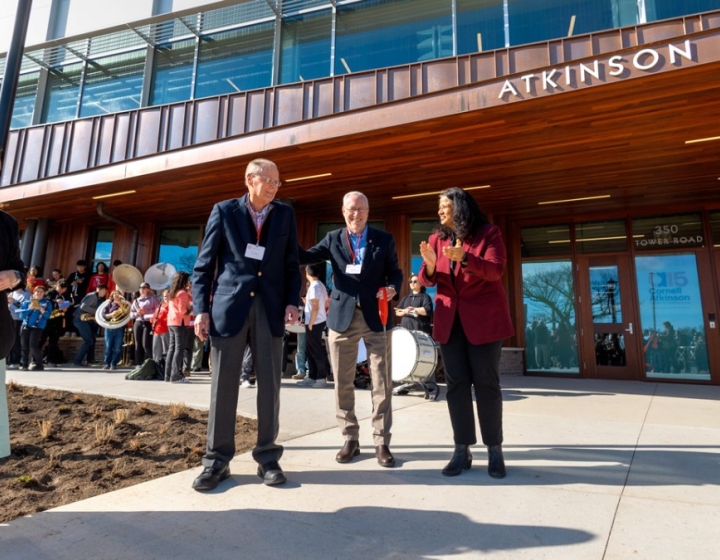Graduate student presents meniscus replacement design at national conference
Tears of the meniscus, c-shaped cartilage cushioning the knee, are some of the most common knee injuries, accounting for over 1 million surgeries a year in the United States. Graduate student Jennifer Puetzer of Cornell’s Department of Biomedical Engineering has found a new more natural way to create meniscus replacements for those whose injuries are beyond repair.
With full funding from the Kappa Delta/American Academy of Orthopedic Surgeons Travel Award, Puetzer presented a podium talk and a poster at the Orthopedic Research Society’s (ORS) annual meeting in March 2013 in New Orleans. Dr. Cornelia Farnum, James Law Professor of Anatomy, emerita at the College of Veterinary Medicine established the award in 2010 to promote orthopedic research at Cornell. It provides up to $1,500 in travel expenses for a trainee who will be presenting research at the annual meeting of the ORS, the research society of the American Association of Orthopedic Surgeons (AAOS).
“ORS is the major conference people in orthopedics go to,” said Puetzer “It’s a close-knit community and everyone is aware of your work and interested what you’re doing. It was the perfect place to present our findings.”
Since 2009 Puetzer has worked in the lab of Dr. Larry Bonassar to engineer a replacement for damaged menisci. Most labs working on meniscus substitutions design them with synthetic fibers, which are so large that the body’s cells struggle to interact with them and end up breaking them down. Puetzer has designed a meniscus replacement using smaller natural materials that cells can use to build back a meniscus structure form the ground up.
 “The meniscus has an intense architecture that’s important for withstanding loads in the knee, with curved fibers running through a c-shape cartilage,” said Puetzer. “We’ve created a meniscus with c-shaped fibers built from natural materials, which is the most organized scaffolds that have been made so far in this field. Making a meniscus replacement with natural materials means we don’t have to worry about negative reactions when it goes into the body. We can create a structure that cells won’t try to break down, so we can get the replacement to take hold faster.”
“The meniscus has an intense architecture that’s important for withstanding loads in the knee, with curved fibers running through a c-shape cartilage,” said Puetzer. “We’ve created a meniscus with c-shaped fibers built from natural materials, which is the most organized scaffolds that have been made so far in this field. Making a meniscus replacement with natural materials means we don’t have to worry about negative reactions when it goes into the body. We can create a structure that cells won’t try to break down, so we can get the replacement to take hold faster.”
Puetzer’s process makes meniscus replacements that can conform to a patient’s exact geometry using injection molding. It begins with an MRI of a specific knee, which maps out the individual’s exact meniscal architecture. She then creates a mold with CAD software and 3D printing, and injects a mixture of collagen and cells into the mold. It forms a meniscus gel in which the cells rearrange the collagen fibers and with mechanical guidance finish building the replacement meniscus on their own.
“Our work so far has been to create this process in the lab,” said Puetzer. “The next step is to use them in vivo. We hope that one day they may be used to help patients recover from formerly irreparable injuries.”
Puetzer plans to graduate in spring 2014. She will pursue a postdoctoral position in London, England, after which she aims to become an academic professor.





